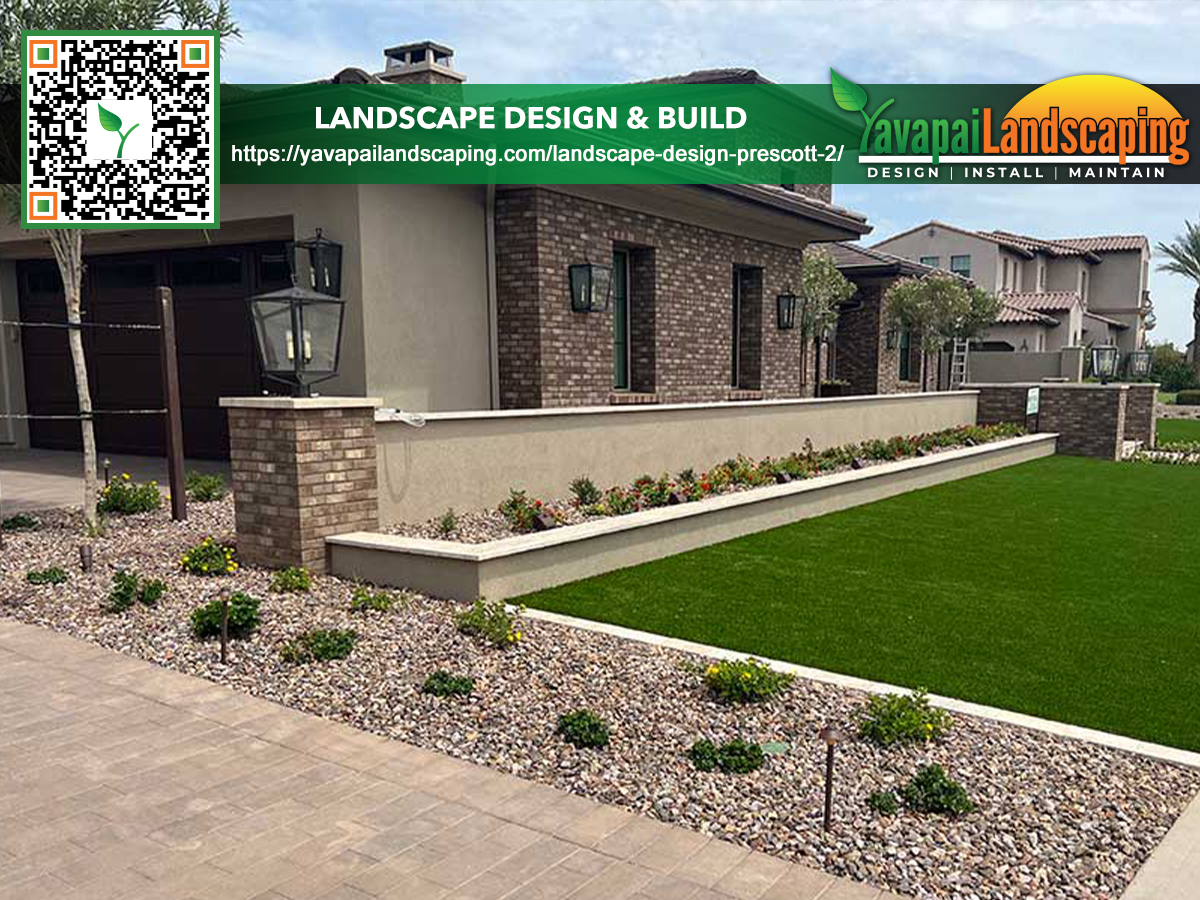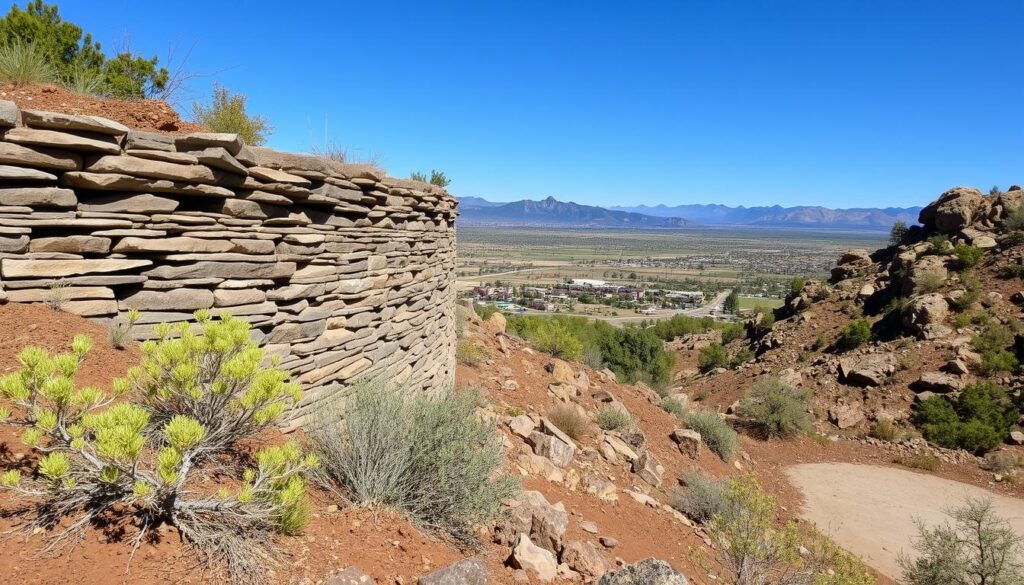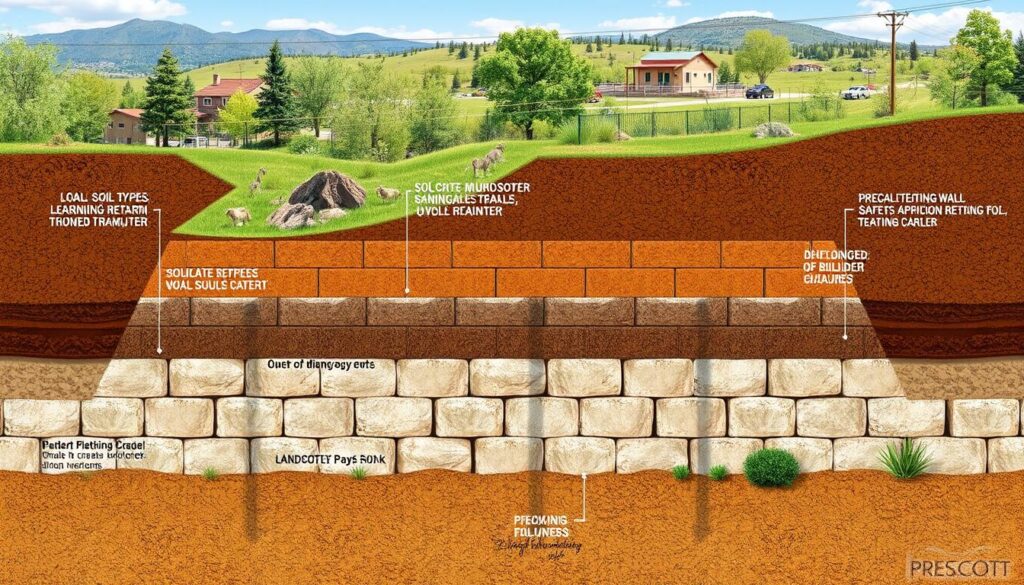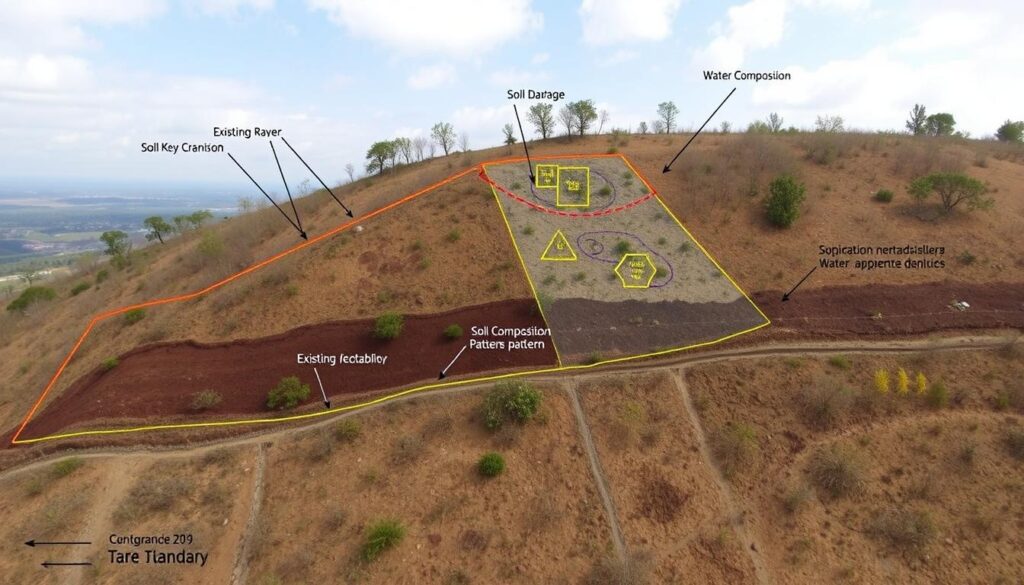
Retaining walls is key in landscape design, especially in Prescott’s unique terrain. Building safe and durable walls needs careful planning and execution. The rugged terrain of northern Arizona requires special attention for long-lasting walls.
In Prescott, safety and durability are top priorities for retaining walls. These walls must handle harsh weather and follow local building codes. The right design and construction are crucial for walls that improve the landscape and are strong.
Landscape designers and contractors in Prescott must focus on retaining wall longevity. They must understand local soil, choose the right materials, and use effective drainage. By doing this, they can build useful and beautiful walls.
Key Takeaways
- Safety and durability are critical in Prescott’s retaining wall construction
- Local soil conditions impact wall stability
- Proper material selection enhances longevity
- Effective drainage systems are essential
- Compliance with local building codes is mandatory
- Professional design and engineering ensure structural integrity
- Regular maintenance prolongs the retaining wall lifespan

Understanding Local Prescott Soil Conditions and Building Requirements
Soil conditions in Prescott are key for building retaining walls. The unique landscape of Northern Arizona requires careful soil consideration. Despite the climate, Prescott’s building rules ensure structures are safe and last long.
Soil Types and Their Impact on Wall Stability
Prescott’s soil ranges from sandy loam to clay. Each type affects wall stability in its own way. Sandy soils drain well but lack cohesion. Clay soils expand and contract with moisture changes.
Knowing these soil types is crucial for proper wall design and building.
| Soil Type | Characteristics | Impact on Wall Stability |
|---|---|---|
| Sandy Loam | Good drainage, low cohesion | Requires deeper footings, potential for settling |
| Clay | Poor drainage, high expansion | Needs moisture barriers, risk of wall movement |
| Rocky | Excellent stability, difficult excavation | Strong foundation, may need specialized equipment |
Local Building Codes and Permit Requirements
Prescott’s building codes are strict for retaining walls. Permits are needed for walls over 4 feet tall. These rules ensure walls are safe and fit well with the local area.

Climate Considerations in Northern Arizona
The climate in Northern Arizona affects retaining wall durability. Freeze-thaw cycles and summer heat can stress materials. Designers must plan for these weather factors to make walls last in Prescott’s varied weather.
Retaining Wall Construction Safety Durability: Essential Planning Steps
Building a safe and durable retaining wall starts with careful planning. This involves key steps to make sure your wall lasts for years.
Site Analysis and Wall Height Calculations
Doing a thorough site analysis is key for a successful retaining wall. You need to check the terrain, soil type, and water flow. Calculating the wall’s height is also important for its stability and strength.

Material Selection for Maximum Longevity
Choosing the right materials is crucial for a long-lasting wall. Consider the local climate, soil, and what you like when picking materials. You can choose from natural stone to engineered concrete blocks, each offering unique benefits for durability and looks.
Drainage System Design Requirements
A good drainage system is vital to stop water from building up behind the wall. You must install weep holes, drainage pipes, and gravel backfill. A well-designed system helps protect the wall from water pressure and erosion, making it last longer.
- Install a perforated drain pipe at the base of the wall
- Use gravel backfill to facilitate water movement
- Incorporate weep holes for additional drainage
Focusing on these planning steps will build a strong foundation for a safe, durable retaining wall. It will improve your landscape design, provide support, and control erosion. This article is a gem – take the time to read it.
Professional Engineering and Design Considerations
Building a retaining wall needs expert knowledge for safety and durability. Getting advice from professionals is key in Prescott, where the soil and weather are different.
Engineers check the soil, wall height, and loads needed. They also think about the pressure from the earth and water behind the wall. These steps help ensure the wall can handle stress and weather over time.
Keeping the wall strong is very important. Engineers use special software to see how the wall will act under different conditions. This helps find any weak spots and makes the design better for stability.
- Geotechnical analysis of soil conditions
- Calculation of earth pressures and loads
- Selection of appropriate materials and reinforcement
- Design of effective drainage systems
Professional engineering makes sure the wall follows local rules. Engineers work with contractors to make sure the design is followed. This teamwork leads to strong walls that look good and work well in Prescott’s landscape.
Installation Best Practices for Long-lasting Retaining Walls
Building a durable retaining wall in Prescott starts with proper installation. You can create a structure that stands the test of time by following proven best practices. It will also withstand local environmental challenges.
Foundation Preparation Techniques
A solid foundation is crucial for wall stability. Start by excavating to the proper depth and width. Next, add a layer of gravel and compact it thoroughly.
This base provides drainage and support for the wall above.
Block Placement and Reinforcement Methods
Correct block placement ensures wall strength. Begin with a level first course and use string lines to maintain alignment. For taller walls, incorporate geogrid reinforcement between layers.
This mesh-like material adds stability by anchoring the wall to the soil behind it.
Backfill and Compaction Standards
Proper backfilling and compaction are key to preventing wall failure. Use well-draining material for backfill and compact in layers. This process reduces settling and improves water drainage.
Follow local compaction standards to achieve optimal soil density behind the wall.
Yavapai Landscaping Prescott offers no-cost estimates for their landscaping and tree services for Prescott and the neighboring regions. This includes tree elimination, pruning, stump grinding, land clearance, storm clean-up, and emergency tree care.
